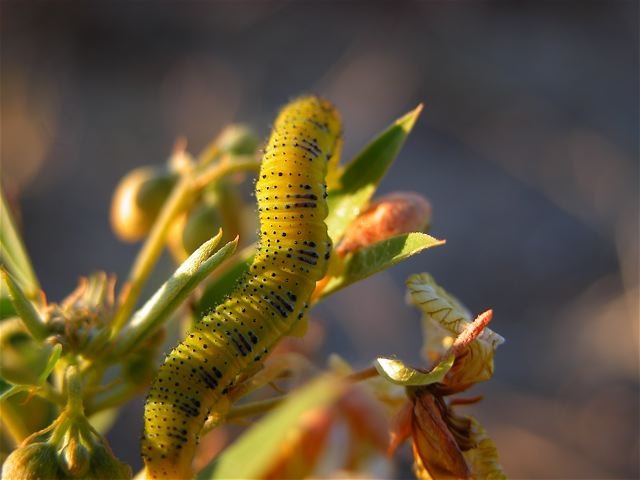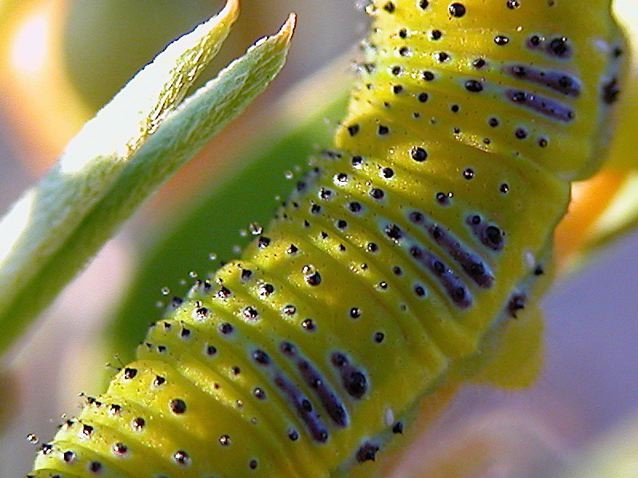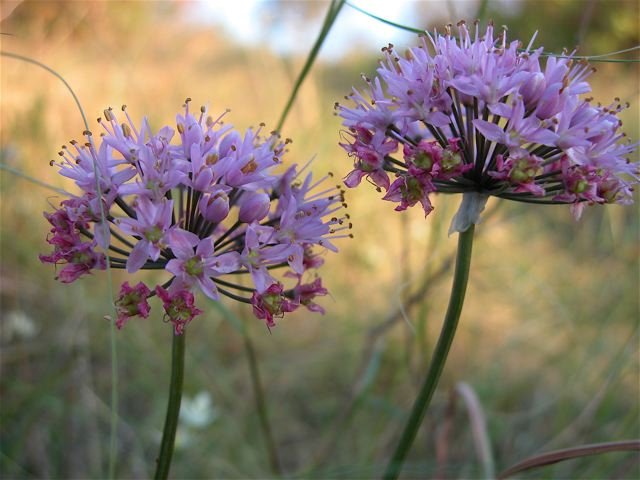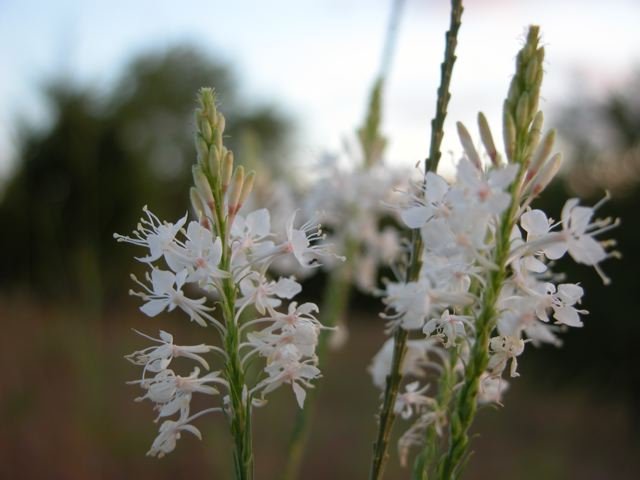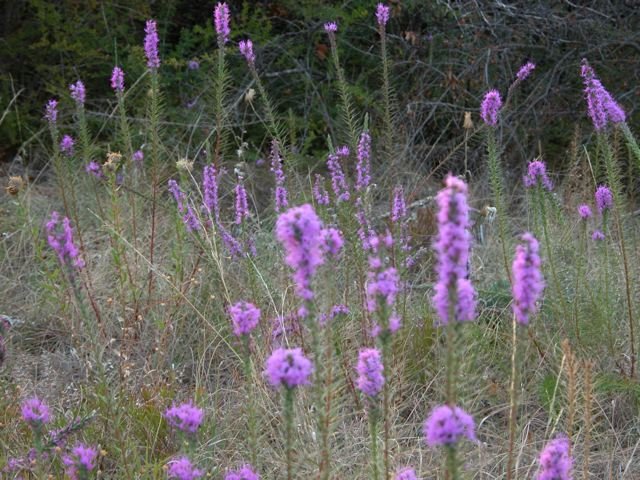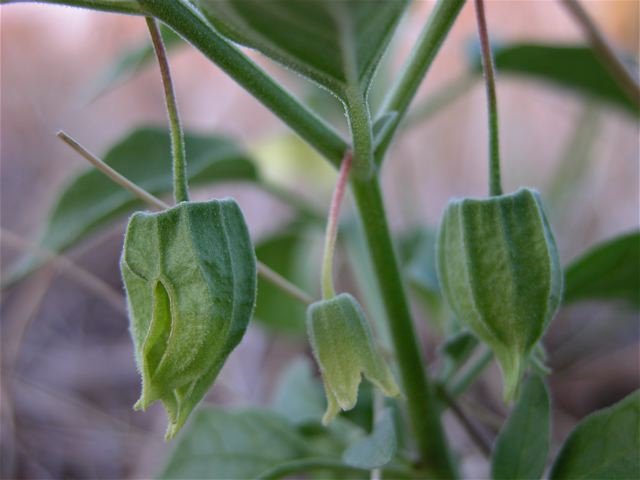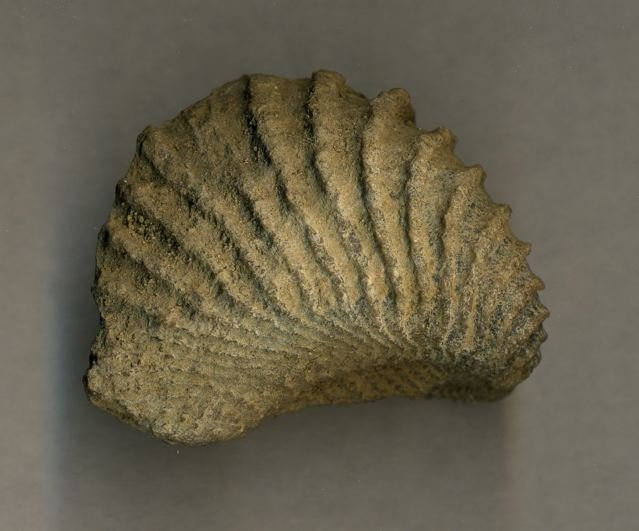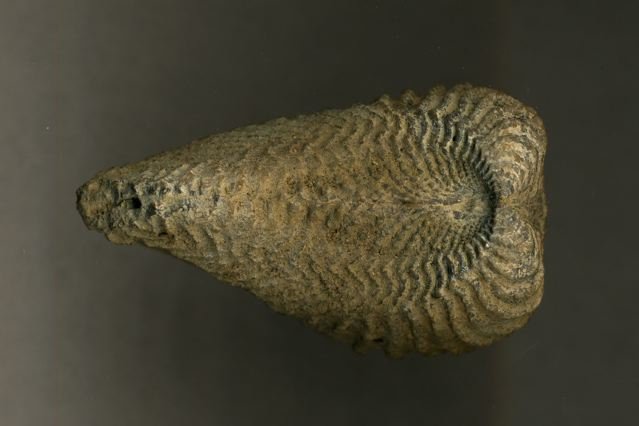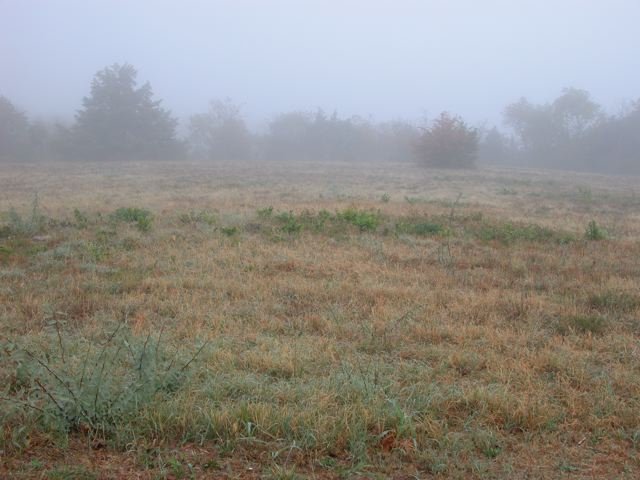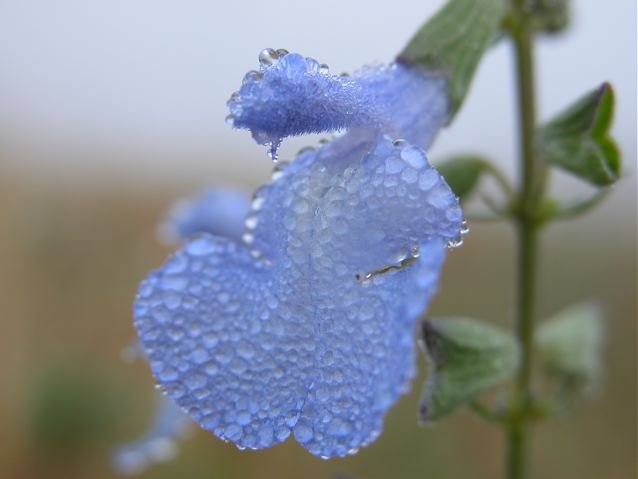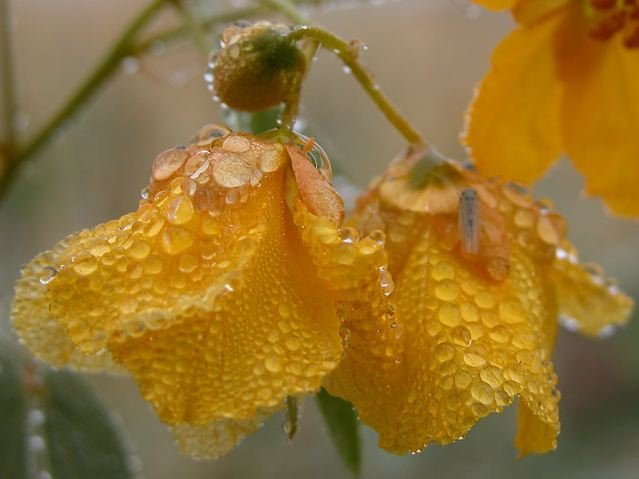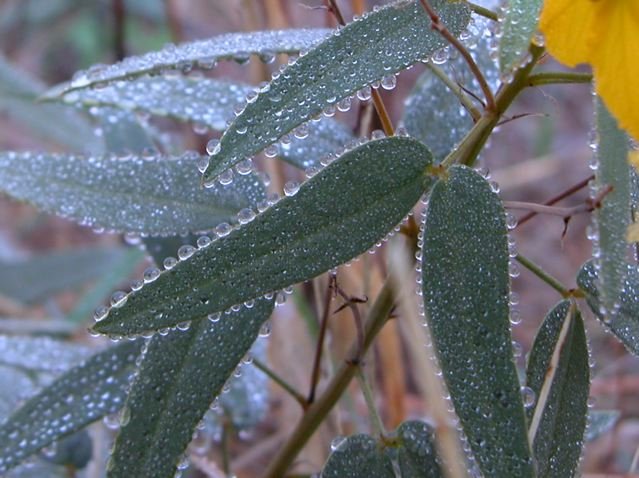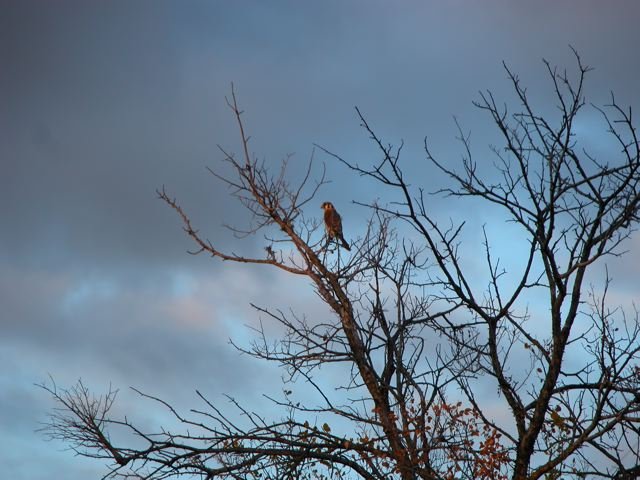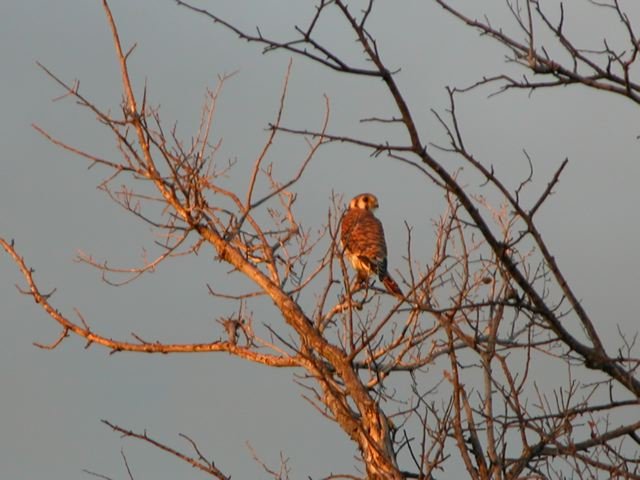PRAIRIE NOTES #59: Metaphorical Metamorphosis
Prairie Notes are monthly photo/journal observations from Tandy Hills Natural Area by Founder/Director, Don Young. They include field reports, flora and fauna sightings, and more, mixed with a scoop of dry humor and a bit of philosophy. They are available free to all who get on the FOTHNA email list.
Metaphorical Metamorphosis
Prairie Notes: #59
November 1, 2011
1) Metaphorical Metamorphosis
2) Metamorphosis Moment
3) Field Report
4) Wildflower of the Moment
5) Fossil Find
6) Fog on the Prairie
7) Prairie Plant Puzzler
8) Kestrel Sighting
9) Prairie Proverb
1) Metaphorical Metamorphosis
October brought a welcome change to Tandy Hills Natural Area. It seems like Mother Nature's odometer passed a milestone. Day after day of Indian Summer weather provided perfect temps for hiking and discovering hidden treasures. Add a couple of nicely spaced rain showers and prairie metamorphosis is under way. There are signs of life where none were present just a few weeks ago. Flying insects have reappeared in swarms, perennial wildflowers have new growth, even the grasses have produced a touch of green. Overall, there's a very limited palette of color to be found after the blistering drought but, there are notable exceptions. The day after an October 'norther blew in, a steady succession of Monarch butterflies fluttered unwaveringly over the Autumn hills and a date with metamorphic destiny. Their orange-black wings contrasted sharply against the jet-blue prairie sky. Days later, crusty pods of Milkweed, their larval host plant, began spewing their ballerina-like seeds skyward, as if welcoming the Monarch's return. All of nature is submitting to transformation of one kind or another. Even us bipeds, far removed from the natural world, feel the tug of change coming on as Summer inevitably fades and we look ahead to Winter. Some of us grow more hairy or fat while some prepare for hibernation. According to doctors, the very composition of our blood changes in Fall and Spring, whether we know it or not. After the Great Drought of '11, a metamorphosis is just the ticket. Shed your chrysalis and migrate over to Tandy Hills. Your host plants are waiting. DY
Harvest Moon and Autumn Sun combine to create surreal scene at Tandy Hills in October, 2011. (untouched photo)
2) Metamorphosis Moment
In the first week of October, I was lucky enough to witness a metamorphic stage of the Cloudless Sulphur butterfly (Phoebis sennae). You may recall from Prairie Notes #58 that, Two-leaf Senna is a larval host plant for this bright, voracious little creature. As lovely as the flighty, lemony-colored butterflies are, I found their caterpillar counterparts to be stunning works of art. I had hoped to document every stage of the metamorphosis but alas nature didn't cooperate. Soon after I photographed the larva you see below a heavy rainstorm moved in. The critter was gone the next day. A few days later I spotted a Sulphur butterfly in the vicinity. Go here to watch a time-lapse video of a, Phoebis sennae, pupating and emerging: http://www.youtube.com/watch?v=GTUgUEpqBrA&feature=dir
3) Field Report
My intro above tells most of the story. Although most of the grass will be back next year, only few patches of Sideoats Grama and Little Bluestem have recovered enough to produce seed this year. Here's a partial list of wildflowers blooming at press time: Broom, Crow Poison (in very large numbers), False Gaura, Gayfeather, Giant Blue Sage, Heath Aster, Maximillian Sunflower, Old Plainsman, Skydrop Aster, Two-leaf Senna, Vervain, Wild Garlic. FYI: The weather is nearly perfect for kicking around at Tandy Hills and discovering these treasures.
4) Wildflower of the Moment
The moment for this odd-looking plant has just passed, but during October, it flourished in a few odd locations at Tandy Hills. Beach Groundcherry (Physalis cinerascens) is in the Solanaceae or, Nightshade family whose members include potato, tomato, tobacco and many toxic plants. The fruit, encased in a lantern-like sack, is similar-looking to Tomatillo. It tends to grow in disturbed areas such as, near the street, so it is easily overlooked. Nonetheless, it was one of the few bright spots on the
5) Fossil Find
Debora Young found this exquisite fossilized shell at Tandy Hills recently. It reminded me that Tandy Hills has, is and will continue to undergo its own kind of metamorphosis. I think this example is from the Cretaceous period, a time when the Earth belonged to no one and to everyone. Check out this nifty website devoted to North Texas fossils: http://www.northtexasfossils.com/
6) Fog on the Prairie
On the morning of October 24, a heavy fog crept over Tandy Hills allowing me to observe the magical ways that H20 clings to wildflowers.
“The fog comes on little cat feet. It sits looking over harbor and city on silent haunches and then moves on.”
7) Prairie Plant Puzzler
Do you know me? My long prickly vines thread discreetly through the tall grass at Tandy Hills, year-round. But when my blooms are on the vine you'll think it's the 4th of July! Right now I'm getting ready for Spring so, all you'll see of me are my very touchy leaves. That's a BIG hint and the only one you you get. (Be the first to guess my name and win a beautiful, organic cotton Tandy Hills bandana that'll blow your mind.) Stumped by the September puzzler? Answer: Eryngo (Eryngium leavenworthii)
Fog droplets on my little leaves give me the shivers. What's my name?
8) Kestrel Sighting
An American Kestrel Hawk was seen patrolling the sky over Tandy Hills in October. They seemed to be less leery of humans than Cooper's and Red-tailed Hawks, allowing me to get much closer.
9) Prairie Proverb
"You said you wanted to put us on a reservation, to build us houses and make us medicine lodges. I do not want them. I was born upon the prairie, where the wind blew free and there was nothing to break the light of the sun... If the Texans had kept out of my country, there might have been peace. The Texans have taken away the places where the grass grew thickest and the timber was the best. Had we kept that, we might have done the things you ask. But it is too late. The whites have the country which we loved, and we only wish to wander on the prairie until we die."
-Ten Bears of the Root Eaters, a north Texas Comanche Indian in about 1875, as quoted in, Goodbye to a River, by John Graves, 1960.
A Harvest Moon rises in the east with a reflected setting sun in the windows of KXAS-TV studios on October 10, 2011.
All content by Don Young unless otherwise noted.




